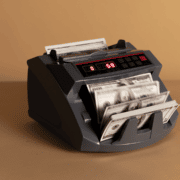We all know that the USD is the most influential currency globally with the highest liquidity. Can you imagine a trading life without the USD?
Trading in synthetic pairs is a way to eliminate the dollar from the list and trade another instrument, probably another currency pair. This approach was not straightforward some years ago due to the lack of liquidity in different pairs. However, modern technology created rooms for traders where we can trade synthetic pairs directly from FX brokers.
The following section will see a deep understanding of how synthetic currencies form to enrich your thoughts on financial trading.
What are synthetic pairs?
Synthetic pair forms by combining two currency pairs by eliminating the common currency between them. It is a way to trade in the forex market where trading in multiple currency pairs is not possible or costly.
For example, let’s say you are a prominent hedge fund trader and want to buy EUR/JPY. You have found this pair as a price level from where the price may move up with a decent speed. But, when you tried to buy, you saw less liquidity in this pair, making trading impossible.
How can you open a buy position now?
If you buy EUR/USD and USD/JPY, you eliminate USD from these two pairs. Let’s see how:
- EUR/USD buy
Buying euro and selling dollar
- USD/JPY buy
Buying dollar and selling yen
Combining these two trading actions will eliminate the USD buy with the sell order while EUR buy and JPY sell will remain active.
How to create synthetic pairs?
Making a synthetic pair needs to open multiple trading positions where both trades require their margin. It is an exciting way to simplify your trade by the same margin on the cross-currency. However, finding a random currency pair is not effective while creating synthetic pairs.
In the above section, we have seen how synthetic pairs form in the EUR/JPY pair. Now move to a step by step approach where we will see how to create synthetic pairs:
Step 1. Analyze multiple pairs
Retail traders are comfortable trading some specific currency pairs. It is good if you are happy in making pips by sticking to rules or strategy. However, the FX market is an excellent place to diversify your skill. You can trade any pairs as most follow the same rules if you know the technical and fundamental analysis.
When you analyze multiple pairs, you can see a room where making money from many pairs is open.
Step 2. Choose your limit
If you are a retail trader and have some thousands of USD in your account, it will be easy to trade any pairs. Modern technology makes trading effortless, and we can buy and sell any pairs with some clicks.
What if you are trading yards?
Buying or selling a more significant volume, of course, at the institutional level, you should find the market liquid. The absence of sellers will make buying impossible, and vice versa. Now, if you want to trade multiple pairs, it is often impossible to trade due to the lack of liquidity that created an opportunity of making synthetic pairs.
Step 3. Find common currency
Making a synthetic pair needs two currency pairs with a common currency. For example, while creating a synthetic currency with GBP/USD and EUR/JPY, you might face a problem by not finding a common currency.
On the other hand, the GBP/USD and USD/JPY have a common currency, which is USD. Now see, how the synthetic pair forms in this pair:
- GBP/USD buy
Buying GBP and selling USD
- USD/JPY buy
Buying USD and selling JPY
Example
Trading this pair will eliminate the USD from both currency pairs. Now move to more examples in the table below.
| Currency pairs | Synthetic pairs |
| EUR/USD buy and USD/CHF sell | EUR/CHF buy |
| GBP/USD buy and USD/NOK sell | GBP/NOK buy |
| USD/CAD sell and USD/JPY buy | CAD/JPY sell |
| AUD/USD sell and USD/JPY buy | AUD/JPY buy |
| USD/CHF sell and USD/JPY buy | CHF/JPY sell |
| NZD/USD buy and USD/CHF sell | NZD/JPY buy |
You can create more synthetic currencies by following the above example. There are hundreds of countries in the world with hundreds of currencies. So, making synthetic pairs is still applicable, even if most FX brokers allow trading in cross or exotic currencies.
Pros and cons of synthetic pairs
In this section, we will see some effectiveness of synthetic pairs with demerits.
Pros |
Cons |
|
|
Final thought
Whether you trade major or synthetic pairs, there is no guarantee that you will make profits until you have a strong understanding of FX. It requires a systematic approach where traders should maintain strong risk management rules.
First, we must build a trading strategy using technical and fundamental analysis after understanding how the market works. Once you are an expert, you are ready to start trading through a forex broker, which is just the beginning of your FX journey.
If you become a successful trader, a significant investment bank or hedge fund may hire you for trading where you have to trade with a more considerable volume and lot sizes. In that case, the synthetic trading approach will be vital for you.

















Comments